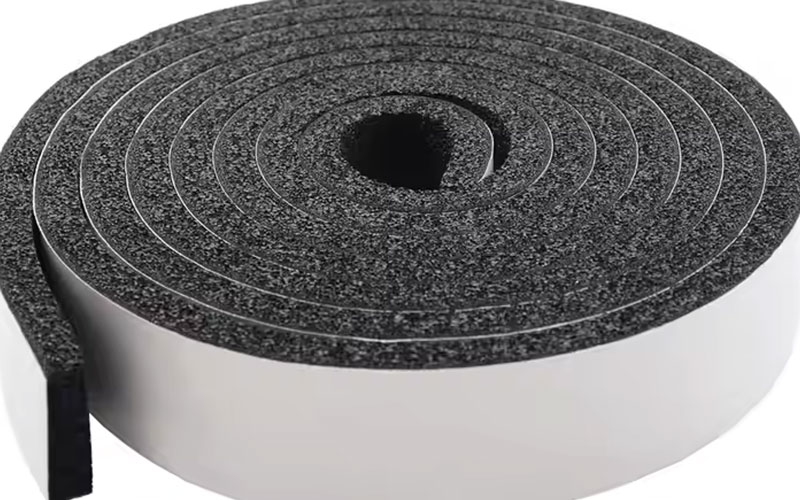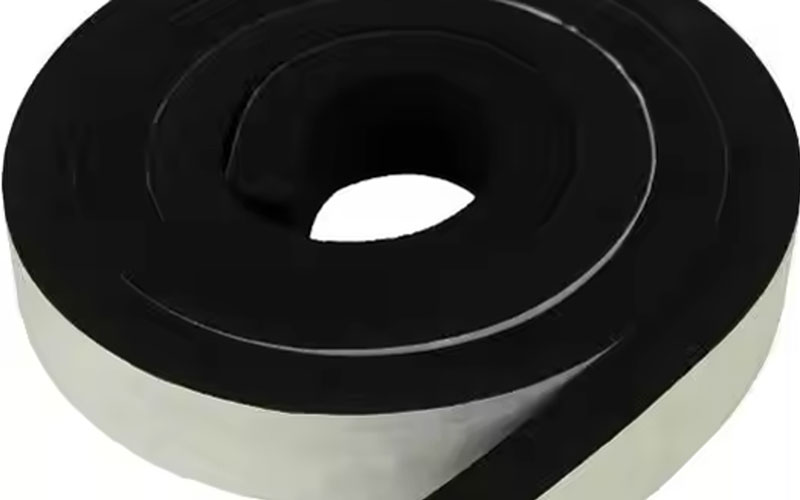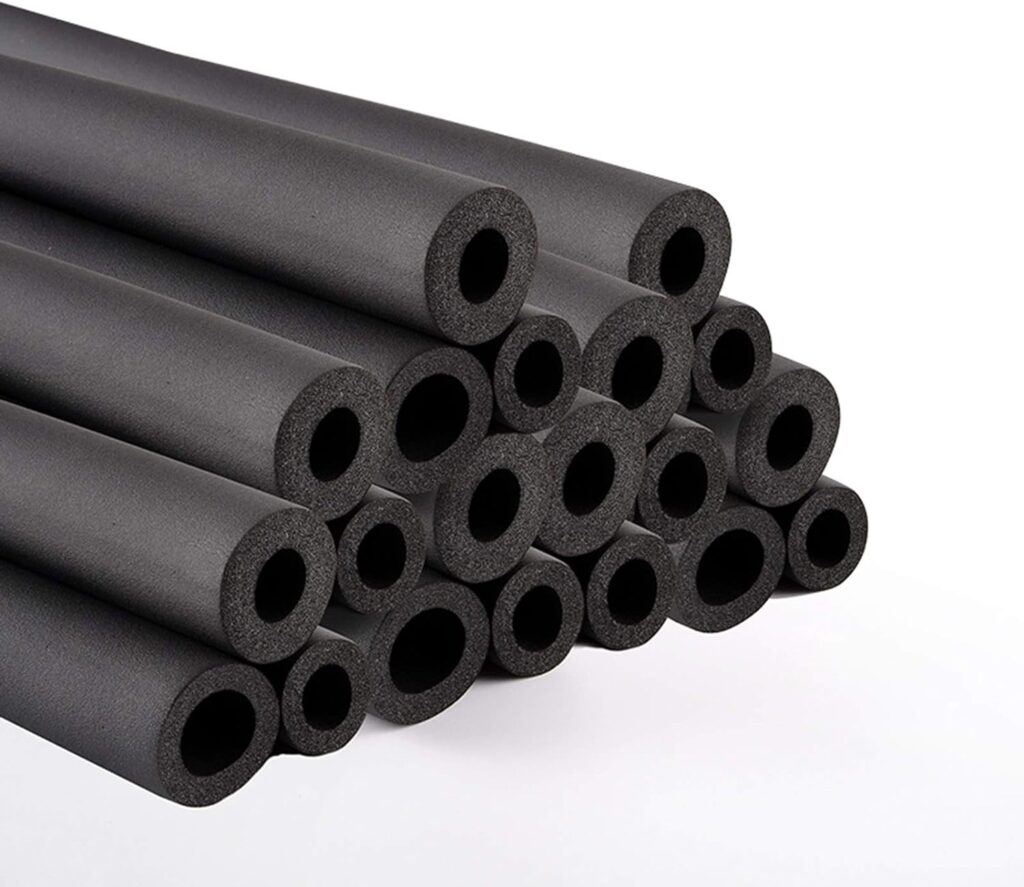In industrial and construction fields, pipe insulation is a vital task. Good pipe insulation can not only improve energy efficiency and reduce energy waste, but also prevent pipe condensation, corrosion and other problems, and extend the service life of the pipe. In the process of foam pipe insulation, choosing the best tape plays a pivotal role and what is the best tape for foam pipe insulation!

1. The Importance of Foam Pipe Insulation
Foam pipe insulation is a commonly used pipe insulation method, and its main advantage lies in its efficient thermal insulation performance. Foam materials have a low thermal conductivity coefficient and can effectively prevent heat transfer, thereby reducing energy consumption. For example, in a heating system, pipes treated with foam insulation can reduce heat loss during transportation, ensure indoor temperature stability, and improve heating efficiency.
At the same time, foam pipe insulation can also prevent condensation in pipes. When the surface temperature of the pipe is lower than the dew point temperature of the surrounding air, the moisture in the air will condense on the surface of the pipe to form water droplets. This will not only affect the appearance of the pipe, but may also cause pipe corrosion and reduce the service life of the pipe. Foam insulation materials can keep the surface temperature of the pipe higher than the dew point temperature to avoid condensation.
In addition, foam pipe insulation also has a certain sound insulation effect, which can reduce the noise generated by the flow of fluid in the pipe and create a quieter and more comfortable environment for people.
2. The role of tape in foam pipe insulation
In foam pipe insulation, tape plays an important role in fixing foam materials, sealing seams and protecting the insulation layer.
- First, the tape can firmly fix the foam material on the surface of the pipe. Since the foam material is usually soft and easy to loosen or fall off, the tape has strong viscosity and tensile strength, which can wrap the foam tightly on the pipe to ensure the stability of the insulation layer.
- Secondly, the tape can seal the seams between the foam materials and the gaps between the foam and the pipe. If these gaps are not sealed, air and moisture will penetrate and reduce the insulation effect. High-quality tape can effectively block the circulation of air and moisture and ensure the integrity of the insulation layer.
- Finally, the tape can also protect the foam insulation layer from damage by the external environment. During the installation and use of the pipeline, the insulation layer may be affected by factors such as collision, friction, and ultraviolet radiation. The tape can provide an extra layer of protection for the insulation layer and extend its service life.

3. Criteria for selecting the best tape for foam pipe insulation
Viscosity and durability
Viscosity is the primary criterion for selecting tape. The tape must have sufficient viscosity to be firmly attached to the foam material and the pipe surface, and will not fall off easily during long-term use. At the same time, the tape should also have good durability and be able to resist the influence of various environmental factors, such as temperature changes, humidity, ultraviolet radiation, etc.
Waterproofness and moisture resistance
Since foam pipe insulation is usually used in humid environments, the tape must have good waterproofness and moisture resistance. The tape should be able to effectively block the penetration of moisture and prevent the insulation layer from being damp and degrading its performance. The waterproof performance of the tape can be evaluated by checking the product manual of the tape or conducting a waterproof test.
High and low temperature resistance
In different application scenarios, the pipeline may face high or low temperature environments. Therefore, the tape should have good high and low temperature resistance, and be able to maintain its viscosity and stable performance under extreme temperature conditions. Generally speaking, high temperature resistant tape can withstand temperatures up to 200℃, while low temperature resistant tape can be used normally in an environment of minus 40℃.
Tensile strength and flexibility
The tape should have sufficient tensile strength to withstand a certain amount of tension without breaking. At the same time, the tape should also have good flexibility to adapt to the bending and deformation of the pipe without cracking or falling off. The tensile strength and flexibility of the tape can be evaluated by tensile testing and bending testing.
Environmental protection
When choosing a tape, its environmental protection should also be considered. Environmentally friendly tapes are usually made of non-toxic and odorless materials, which will not cause harm to the human body and the environment. In addition, environmentally friendly tapes should also be recyclable or degradable to reduce pollution to the environment.

4. Common types of best tape for pipe insulation
Aluminum foil tape
Aluminum foil tape is a tape composed of aluminum foil and adhesive, which has good heat insulation, waterproof, moisture-proof and corrosion resistance. The surface of the aluminum foil tape is smooth, which can reflect heat and improve the insulation effect. At the same time, the aluminum foil tape also has strong viscosity and tensile strength, and can be firmly attached to the foam material and the surface of the pipe. Aluminum foil tape is suitable for foam pipe insulation under various temperature conditions and is a more common insulation tape.
Butyl tape
Butyl tape is a tape with butyl rubber as the main raw material, which has excellent waterproof, sealing and corrosion resistance. Butyl tape has strong viscosity and can maintain good adhesion performance in humid environments. At the same time, butyl tape also has good high and low temperature resistance, suitable for various harsh environmental conditions. Butyl tape is mainly used to seal joints and gaps in foam pipe insulation to prevent moisture penetration.
PVC tape
PVC tape has good elasticity and wear resistance, suitable for occasions where foam pipe insulation needs to be sealed and fixed. It is often used in environments that require waterproofing and moisture resistance, and is particularly suitable for industrial applications.
EPDM rubber tape
EPDM tape has excellent weather resistance and ozone resistance, making it very suitable for outdoor use, especially in direct sunlight and strong ultraviolet light environments.
Cloth-based tape
Cloth-based tape is a tape made of cloth as the base material and coated with adhesive. Cloth-based tape has strong tensile strength and flexibility, and can adapt to the bending and deformation of the pipe. At the same time, cloth-based tape also has good wear resistance and corrosion resistance, suitable for some pipe insulation that needs to be moved or rubbed frequently. Cloth-based tape also has good viscosity and can be firmly attached to the foam material and pipe surface.

5. Correct method of using foam pipe insulation tape
Cleaning the pipe surface
Before using the tape, the pipe surface should be cleaned to remove impurities such as dust, oil, and moisture to ensure that the pipe surface is dry and clean. You can use detergent and rags to clean, or you can use tools such as sandpaper to polish the pipe surface to increase the adhesion of the tape.
Cutting tape
Cut the tape of appropriate length and width according to the size and shape of the pipe. When cutting the foam tape, try to keep the edges of the tape neat to avoid burrs or cracks.
Pasting tape
Paste the cut tape on the foam material and the surface of the pipe, starting from one end and gradually pasting to the other end. During the pasting process, try to keep the tape flat and close to avoid bubbles or wrinkles. At the same time, press the tape hard to make it fully contact with the foam material and the pipe surface to improve the adhesion.
Sealing seams and gaps
For the seams between foam materials and the gaps between foam and pipes, tape should be used for sealing. The tape can be cut to an appropriate width and wrapped around the seams or gaps to ensure a tight seal.
Inspection and maintenance
After pasting the tape, check the pasting of the tape to ensure that the tape is firmly pasted on the foam material and the pipe surface. If any loose or detached parts are found, they should be repaired in time. During the use of the pipeline, the condition of the tape should also be checked regularly. If there is any damage or aging, it should be replaced in time.

In summary, choosing the best tape is crucial for foam pipe insulation. When choosing tape, factors such as viscosity, durability, waterproofness, high and low temperature resistance, tensile strength and flexibility, and environmental protection should be considered comprehensively according to the specific application scenarios and requirements. At the same time, the tape should also be used correctly to ensure that it can play the best insulation effect. By choosing the right tape and the correct method of use, the quality and performance of foam pipe insulation can be improved, contributing to energy conservation and consumption reduction and environmental protection in the industrial and construction fields.





